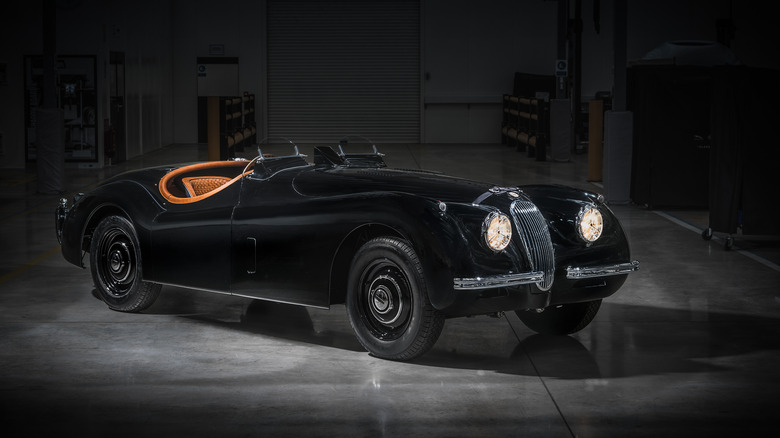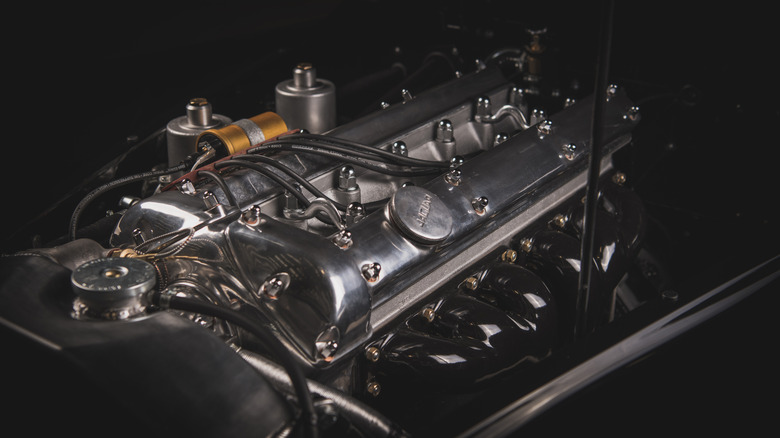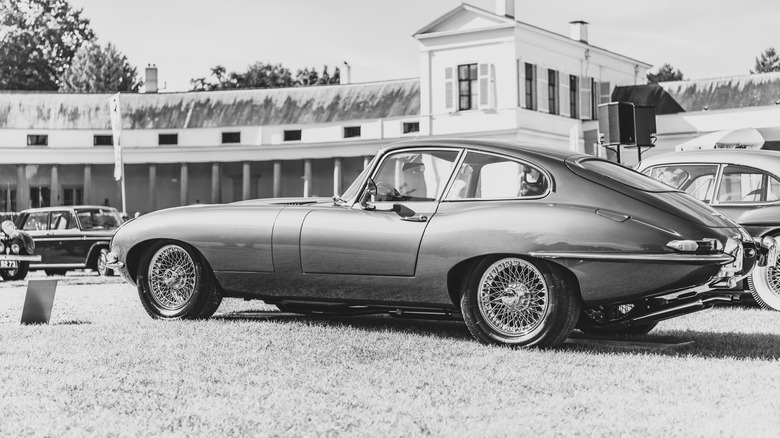Everything To Know About Jaguar's XK6 Inline-6 Engine
The Jaguar XK inline-six engine saw action in numerous vintage and post-modern production Jags, racing cars, and military vehicles from 1949 to 1992. Long before the Jaguar E-Type solidified the brand's reputation of making the world's most exotic, fastest, and most beautiful sports cars in 1961, the XK inline-six engine was notable for its smoothness, power output, and reliability.
However, Jaguar co-founder Sir William Lyons wanted his new engine to look beautiful under the hood, akin to an expensive Bugatti or Duesenberg engine. The result is the XK inline six-cylinder engine that debuted in the 1948 Jaguar XK 120. Boasting 3.4 liters of displacement, dual overhead camshafts, dual SU side-draft carburetors, and aluminum engine castings, the powerplant is as desirable to behold as the car itself.
Space, pace, and grace are merits buyers expect from a Jag, and the brand's first post-war engine ensured it took care of the "pace" factor. Producing 160 horsepower (at 5,000 rpm) and 195 lb-ft of torque at 2,500 rpm, the XK 120 could rush from zero to 60 mph in about ten seconds, not too shabby for a post-war sports car. Moreover, the "120" moniker refers to the car's top speed of 120 mph.
Jaguar XK engine: Humble beginnings
Sir William Lyons and his brainiac engineers started conceiving the all-new XK engine amid fire-watching duties during WWII. The company had a running four-cylinder prototype after the war, and it had the base ingredients of what would eventually evolve into the Jaguar XK engine: Dual overhead camshafts, two valves per cylinder, hemispherical combustion chambers, and polished cam covers.
Moreover, the XK inline-six has two sets of three cylinders with wider spacing in the middle to improve the coolant flow. Each cylinder has a cast aluminum piston with dual compression rings, a single oil ring, and a full-floating wrist-pin design to minimize friction. Each piston has a dome on top to deliver an 8.0:1 compression ratio in early models of the XK 120.
Sealing the deal are shiny aluminum components like a cast aluminum head, front timing cover, cam covers, and oil pan. The decision to use an aluminum head saved 70 pounds, but the XK's cast-iron engine block and transmission casing meant the entire powertrain tipped the scales at about 700 pounds.
Winning pedigree
The XK six-cylinder engine propelled Jaguar to many championship victories at Le Mans, claiming the checkered flag in 1951, 1953, and 1955 to 1957. The XK motor was so potent and reliable that five of the top six winning cars in the 1957 Le Mans 24 Hours were Jaguar D-Types. Meanwhile, the sensational E-Type had a triple-carb 3.8-liter inline-six with 265 horsepower and 260 lb-ft of torque.
By 1965, Jaguar updated the XK engine, giving it a new block with evenly-spaced bores and a more substantial 4.2-liter displacement. Upgrades like a Bosch L-Jetronic fuel injection system kept the XK engine ticking until 1987. The last car powered by an XK-6 engine was the 1992 Daimler Sovereign limousine.
Jaguar's XK6 inline-six engine was one of the longest-serving production engines in automotive history. It also gave designers a reason to make the lump better looking for its owners and bystanders to admire. Jaguar Classic reintroduced its venerable 3.8-liter XK engine block in 2020 to keep those luscious vintage Jags humming on the road. For about $15,000, the XK engine block is good for the XK 150, XK 150S, MkIX, Mk2, MkX, the Series I E-Type, and the Jag S-Type.


